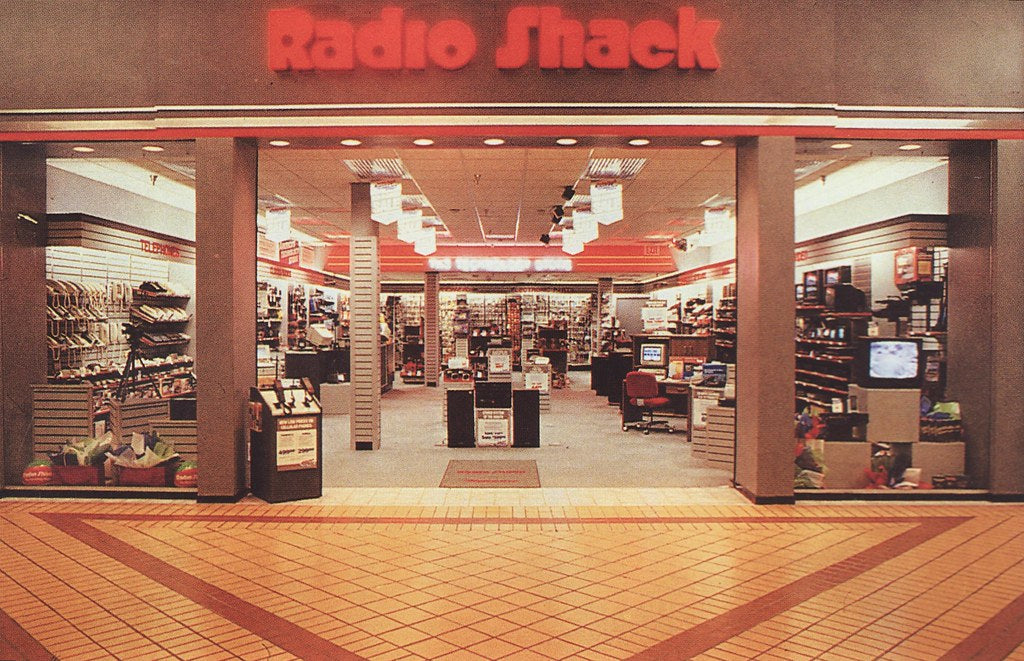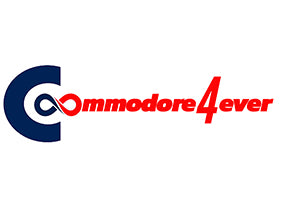
RadioShack: The Rise of a Tech Icon and Its Golden Era in the 80s
Share
There was a time when walking into a RadioShack felt like stepping into the future. As a kid and young teen, I was in complete awe of the endless rows of computers, circuit boards, and gadgets that lined the shelves. It was more than a store—it was a playground for the tech-obsessed.
For those of us who grew up with Commodore computers, TRS-80s, and the dream of building something amazing, RadioShack was the place where ideas turned into reality. It was where I first saw a computer up close, held my first joystick, and discovered components that would eventually shape my passion for retro computing—a passion that now lives on in Commodore4Ever.
This post is more than just a look at RadioShack’s history. It’s a tribute to a store that fueled my love for tech and inspired a generation of makers, coders, and dreamers.
From Humble Beginnings to a Tech Giant
RadioShack was founded in 1921 by Theodore and Milton Deutschmann in Boston, Massachusetts. It started as a small shop catering to amateur radio enthusiasts, selling essential components for the growing radio hobbyist market.
For the first few decades, RadioShack remained a niche business, offering vacuum tubes, resistors, and radio equipment. But by the early 1960s, the company was struggling financially.
The Tandy Takeover and a New Vision
In 1962, Charles Tandy, the head of Tandy Corporation, saw potential in the struggling electronics retailer and bought RadioShack. Under Tandy’s leadership, the company shifted its focus toward consumer electronics, DIY tech projects, and private-label products.
By the 1970s, RadioShack had expanded into hundreds of stores nationwide and had become the ultimate one-stop shop for hobbyists, tech enthusiasts, and budding engineers.
The TRS-80: RadioShack’s Entry into Personal Computing
The late 70s and early 80s were a turning point for computing. In 1977, RadioShack introduced one of the first mass-market personal computers—the TRS-80 Micro Computer System.
I still remember seeing the TRS-80 sitting on display, its monochrome screen glowing with a world of possibilities. It was a game-changer, making computing accessible to a wider audience.
Key Features of the TRS-80 Model I (1977):
- CPU: Zilog Z80 @ 1.77 MHz
- RAM: 4 KB (expandable to 48 KB)
- Storage: Cassette tape (later floppy disk options)
- Display: Monochrome text
- Operating System: TRSDOS
With a starting price of $599, the TRS-80 became one of the best-selling computers of its time, paving the way for the home computing revolution. It wasn’t as visually stunning as a Commodore 64, but it proved that personal computing was here to stay.
The 1980s: RadioShack’s Golden Era
By the 1980s, RadioShack was at its peak. The stores were packed with DIY electronics kits, home computers, CB radios, audio equipment, and futuristic gadgets. This was a time when geeks ruled the world—and RadioShack was their headquarters.
RadioShack’s Most Iconic Products of the 80s
TRS-80 Color Computer ("CoCo")
The TRS-80 Color Computer (CoCo), released in 1980, was a response to the growing popularity of home computers. It was RadioShack’s answer to the Commodore 64, featuring color graphics, a Motorola 6809E processor, and a design that appealed to gamers and programmers alike.
Though I was more of a Commodore guy, I always admired the CoCo’s ability to introduce thousands of people to home computing.
Tandy 1000 (1984)
The Tandy 1000 was a huge success, offering IBM PC compatibility at a lower price. For many, this was the first PC they ever owned—especially in schools. While Commodore was dominating the gaming world, the Tandy 1000 was finding its place in homes and offices.
Realistic CB Radios and Stereo Equipment
RadioShack wasn’t just about computers. The Realistic brand of CB radios, shortwave scanners, and stereo systems was a big part of 80s tech culture. CB radios were incredibly popular thanks to movies like Smokey and the Bandit, and RadioShack was the best place to buy them.
The Armatron (1980s)
One of the coolest toys of the 80s, the Armatron was a robotic arm sold by RadioShack. It was a dream for any kid fascinated by robotics, and it introduced thousands of young minds to the mechanics of movement and control.
RadioShack at Its Peak
By the mid-80s, RadioShack had:
- Over 7,000 stores worldwide
- Billions in annual revenue
- Millions of computers sold
It was more than just a retailer—it was an institution. It gave tech enthusiasts, hobbyists, and future engineers a place to explore, learn, and create.
A Personal Connection: The Store That Started It All
As a kid, I spent hours wandering the aisles of RadioShack. Whether it was staring at the latest computer displays, flipping through the iconic catalogs, or picking up parts for a DIY project, RadioShack fueled my passion for technology.
This love for tech eventually led me to Commodore4Ever, where I celebrate the best of retro computing and 80s nostalgia. I still think back to those early days, standing in a RadioShack, mesmerized by the magic of electronics.
Conclusion: The Legacy Lives On
Though RadioShack has faded from its former glory, its impact on the tech world, DIY culture, and home computing revolution remains undeniable. The 80s were its golden age, and for those of us who lived through it, RadioShack was more than just a store—it was the gateway to the future.
Even today, the spirit of RadioShack lives on in the retro computing community, maker movement, and the nostalgia for a time when discovering new technology was a hands-on experience.
Long live the Shack.

1 comment
Reading this has got me feeling some type of way…I fondly recall going to Radio Shack in the late 70s and early 80s and picturing myself as the next Buck Rogers…